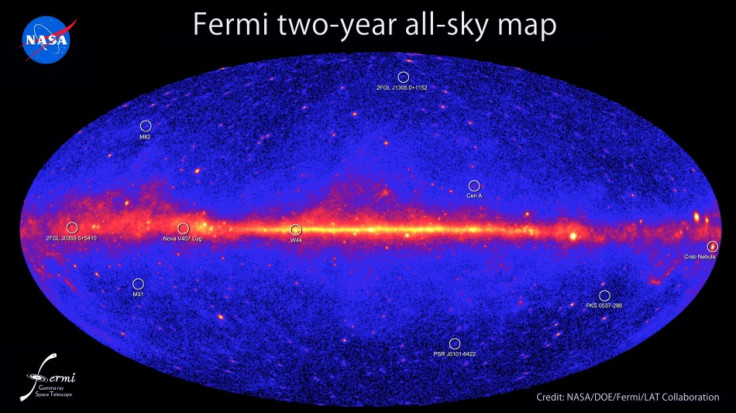NASA’s Fermi Gamma-Ray Space Telescope Unravels New Cosmic Mysteries

NASA has released new data from its orbiting Fermi Gamma-Ray Large Area Telescope showing 1,873 objects shining with the highest-energy form of light.
More than half of these sources are active galaxies, whose massive black holes are responsible for the gamma-ray emissions that the LAT detects, said Gino Tosti, an astrophysicist at the University of Perugia in Italy and a visiting scientist at SLAC National Accelerator Laboratory in Menlo Park, Calif.
The Fermi telescope scans the entire sky every three hours to deepen the understanding of the high-energy universe. This data is reanalyzed by astronomers at the end of a year, exploiting updated analysis methods to tease out new sources.
These relatively steady sources are in addition to the numerous transient events that Fermi detects, such as gamma-ray bursts in distant galaxies and flares from the sun.
Astronomers delight in the possibility of finding new types of gamma-ray-emitting objects within the unassociated sources that constitute roughly a third of their catalog. But Fermi's LAT is revealing gamma-rays from an increasing -- and sometimes, surprising -- variety of astronomical objects. Among the range of LAT discoveries, the Fermi team announced the following:
The Crab Nebula: The famous Crab Nebula, located in the constellation Taurus, is the wreckage of an exploded star whose light reached Earth in 1054. Located 6,500 light-years away, the Crab is one of the most studied objects in the sky.
For decades, most astronomers regarded the Crab Nebula as the steadiest beacon at X-ray energies. But data from several orbiting instruments -- including Fermi's Gamma-ray Burst Monitor -- now show unexpected variations. Astronomers have shown that since 2008, the nebula has faded by 7 percent at high energies, a reduction is likely tied to the environment around its central neutron star.
Since 2007, Fermi and the Italian Space Agency's AGILE satellite have detected several short-lived gamma-ray flares at energies hundreds of times higher than the nebula's observed X-ray variations. In April, the satellites detected two of the most powerful yet recorded.
W44: Another interesting supernova remnant detected by Fermi's LAT is W44. Thought to be about 20,000 years old -- middle-age for a supernova remnant -- W44 is located about 9,800 light-years away in the constellation Aquila. The LAT not only detects this remnant, it reveals GeV gamma rays coming from places where the remnant's expanding shock wave is known to be interacting with cold, dense gas clouds.
V407 Cygni: V407 Cygni is a so-called symbiotic binary system, one that contains a compact white dwarf and a red giant star that has swollen to about 500 times the size of the sun. When the system's most recent eruption was seen in March 2010, Fermi's LAT defied expectations and detected the nova as a brilliant source. Scientists did not expect that this type of outburst had the power to produce high-energy gamma rays.
Pulsar PSR J0101-6422: Around 6 percent of the new catalogue comprises the rapidly rotating neuron stars called pulsars. In some cases, the LAT can detect gamma-ray pulses directly, but in many cases, pulses were first found at radio wavelengths based on suspicions that a faint LAT source might be a pulsar. PSR J0101-6422 is located in the southern constellation of Tucana, its quirky name reflecting its position in the sky.
2FGL J0359.5+5410: This source resides near the populous midplane of our galaxy, which increases the chance that it's actually an object in the Milky Way. While its gamma-ray spectrum resembles that of a pulsar, pulsations have not been detected and it isn't associated with a known object at other wavelengths.
© Copyright IBTimes 2024. All rights reserved.





















